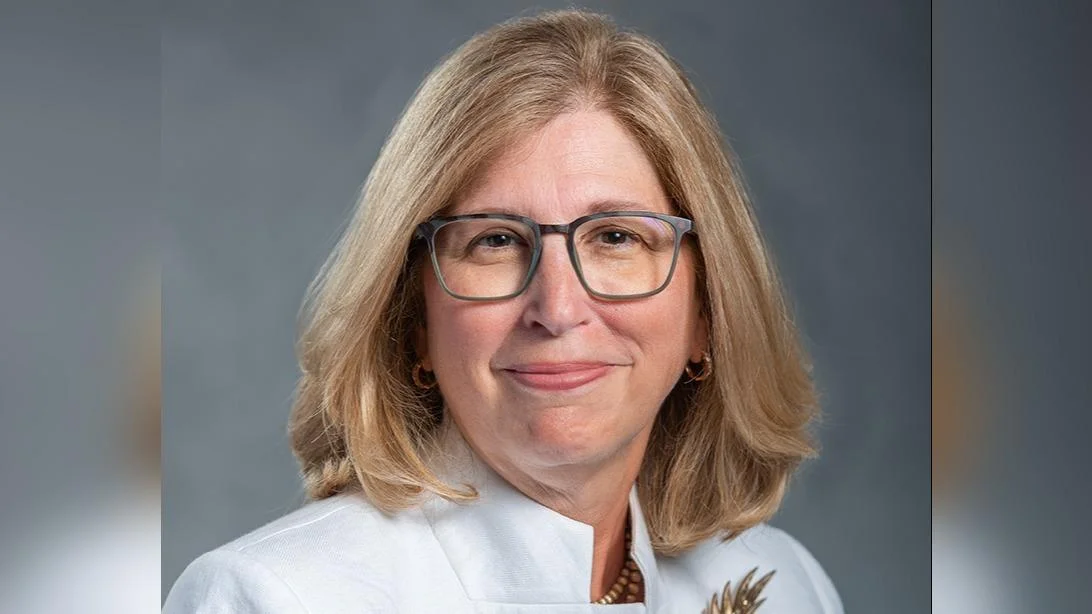Interim President Teresa K. Woodruff, Ph.D. | Michigan State University
Interim President Teresa K. Woodruff, Ph.D. | Michigan State University
Researchers from the Facility for Rare Isotope Beams (FRIB) have collaborated with an international team to address complex computational challenges in quantum physics. They are employing a new method known as wavefunction matching, which has potential applications in fields like nuclear physics. This innovative approach enables theoretical calculations of atomic nuclei that were previously unfeasible. Details of the research are published in Nature under the title "Wavefunction matching for solving quantum many-body problems."
Wavefunction matching is used to replace the short-distance part of a two-body wavefunction for a realistic interaction with one that is easily computable. This results in a new interaction suitable for quantum many-body calculations. In nuclear physics, ab initio methods describe complex systems by beginning with their elementary components and interactions, such as protons and neutrons. These methods can help answer questions about binding energies and properties of atomic nuclei not yet observed.
However, some ab initio methods face challenges with reliable calculations due to complex interactions. Quantum Monte Carlo simulations, which use stochastic processes, are one such method that encounters issues like the sign problem, where positive and negative weight contributions cancel out, leading to inaccurate predictions.
The wavefunction-matching approach was developed to overcome these computational obstacles. The research team includes members from Gaziantep Islam Science and Technology University in Turkey; University of Bonn, Ruhr University Bochum, and Forschungszentrum Jülich in Germany; Institute for Basic Science in South Korea; South China Normal University, Sun Yat-Sen University, and Graduate School of China Academy of Engineering Physics in China; Tbilisi State University in Georgia; CEA Paris-Saclay and Université Paris-Saclay in France; Mississippi State University; and FRIB at Michigan State University.
Dean Lee, professor of physics at FRIB and head of the Theoretical Nuclear Science department at FRIB stated: “We are often faced with the situation that we can perform calculations using a simple approximate interaction, but realistic high-fidelity interactions cause severe computational problems.” He explained that wavefunction matching "solves this problem by doing plastic surgery" by removing short-distance parts of high-fidelity interactions.
The research team applied this method to lattice quantum Monte Carlo simulations for various nuclear matters including light nuclei and medium-mass nuclei. The results matched closely with real-world data on nuclear properties like size and structure.
Yuan-Zhuo Ma, postdoctoral research associate at FRIB remarked: “It is a fantastic project and an excellent opportunity to work with the brightest nuclear scientists in FRIB and around the globe.” Ma expressed excitement about using powerful exascale supercomputers to implement wavefunction matching.
While focusing on quantum Monte Carlo simulations initially, wavefunction matching may benefit other ab initio approaches across classical and quantum computing calculations. Collaborators hailed from institutions worldwide including those from China, France, Germany, South Korea, Turkey, and the United States.
Lee added: “The work is the culmination of effort over many years to handle the computational problems associated with realistic high-fidelity nuclear interactions.” He credited collaboration members especially lead author Serdar Elhatisari for their contributions.
This research was supported by several organizations including U.S. Department of Energy (DOE), U.S. National Science Foundation (NSF), German Research Foundation (DFG), National Natural Science Foundation of China (NSFC), Chinese Academy of Sciences President’s International Fellowship Initiative (PIFI), Volkswagen Stiftung among others.
Michigan State University's FRIB operates as a user facility for DOE's Office of Science supporting its mission towards understanding rare isotopes' properties which have applications spanning medicine to homeland security.
For more information on DOE's Office of Science visit energy.gov/science.






 Alerts Sign-up
Alerts Sign-up